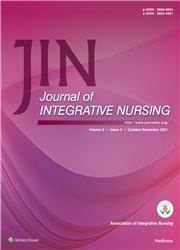Accessible and low- to zero-cost remedy: Traditional medicine use during pregnancy and labor
Q4 Nursing
引用次数: 0
Abstract
Traditional medicine (TM) has played an essential part in maternity services around the world, which has led to increased utilization among pregnant women. Herbs, herbal preparations, and completed herbal products are examples of TMs that contain active substances such as plant parts or other plant components that are thought to have therapeutic advantages. This study review aimed to identify the herbs commonly used, reasons for use, and effect of use, to make adequate recommendations on herbal medicine use as a remedy for pregnancy and labor. Incorporating evidence from reviews, personal correspondence, and diaries, this study demonstrates that about 80% of people used TM such as herbal remedies for sickness diagnosis, prevention, treatment, and promotion of general well-being. Due to its accessibility, cost, and availability, TM is usually used by expectant mothers. Examples of TM used in pregnancy and labor include honey, aloe, raspberry, jute mallow, and hibiscus leaves. It is important to note that its use in pregnancy and labor can be beneficial or harmful to both mother and child. Lack of standardization, financial risk, lack of safety, and effectiveness are challenges to TM. There is a need of creating awareness of the safe use and effects of TM in pregnancy and labor through the provision of health education programs for women in the community.可获得和低至零成本的补救措施:在怀孕和分娩期间使用传统药物
传统医学在世界各地的产妇服务中发挥了重要作用,这导致孕妇对传统医学的利用有所增加。草药、草药制剂和完整的草药产品是含有活性物质的中药材的例子,如被认为具有治疗优势的植物部分或其他植物成分。本研究综述旨在确定常用的草药,使用的原因和使用的效果,对草药作为妊娠和分娩的补救措施提出充分的建议。结合来自评论、私人信件和日记的证据,这项研究表明,大约80%的人使用传统疗法(如草药)来诊断、预防、治疗疾病,并促进整体健康。由于TM的可及性、成本和可用性,它通常被准妈妈使用。在怀孕和分娩中使用TM的例子包括蜂蜜、芦荟、覆盆子、黄麻和芙蓉叶。重要的是要注意,在怀孕和分娩时使用它可能对母亲和孩子都有益或有害。缺乏标准化、财务风险、缺乏安全性和有效性是传统医学面临的挑战。有必要通过向社区妇女提供健康教育方案,提高人们对怀孕和分娩时安全使用TM及其效果的认识。
本文章由计算机程序翻译,如有差异,请以英文原文为准。
求助全文
约1分钟内获得全文
求助全文
来源期刊

Journal of Integrative Nursing
Nursing-General Nursing
CiteScore
0.40
自引率
0.00%
发文量
3
审稿时长
17 weeks
 求助内容:
求助内容: 应助结果提醒方式:
应助结果提醒方式:


